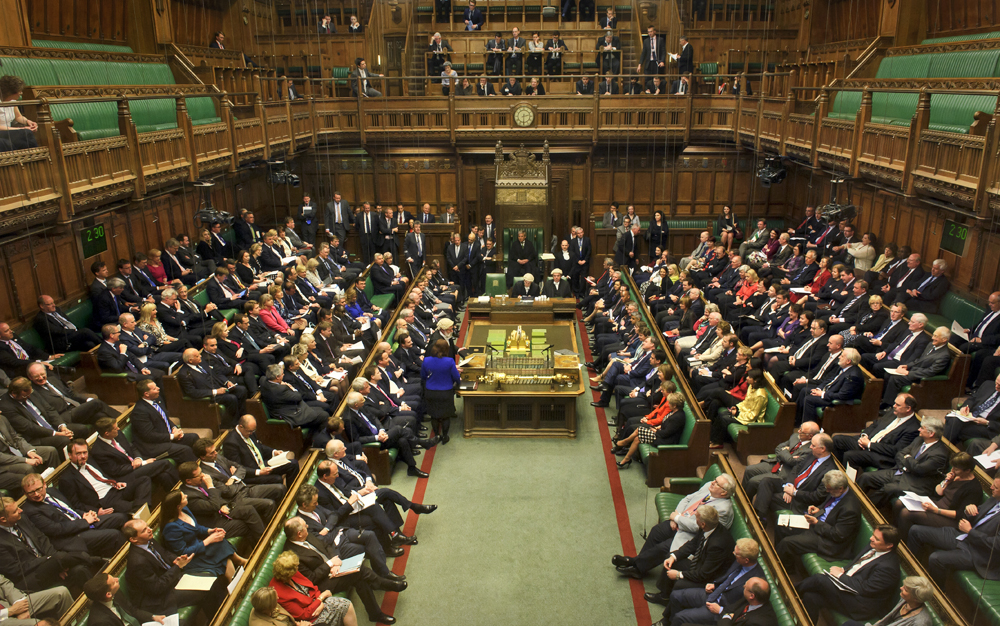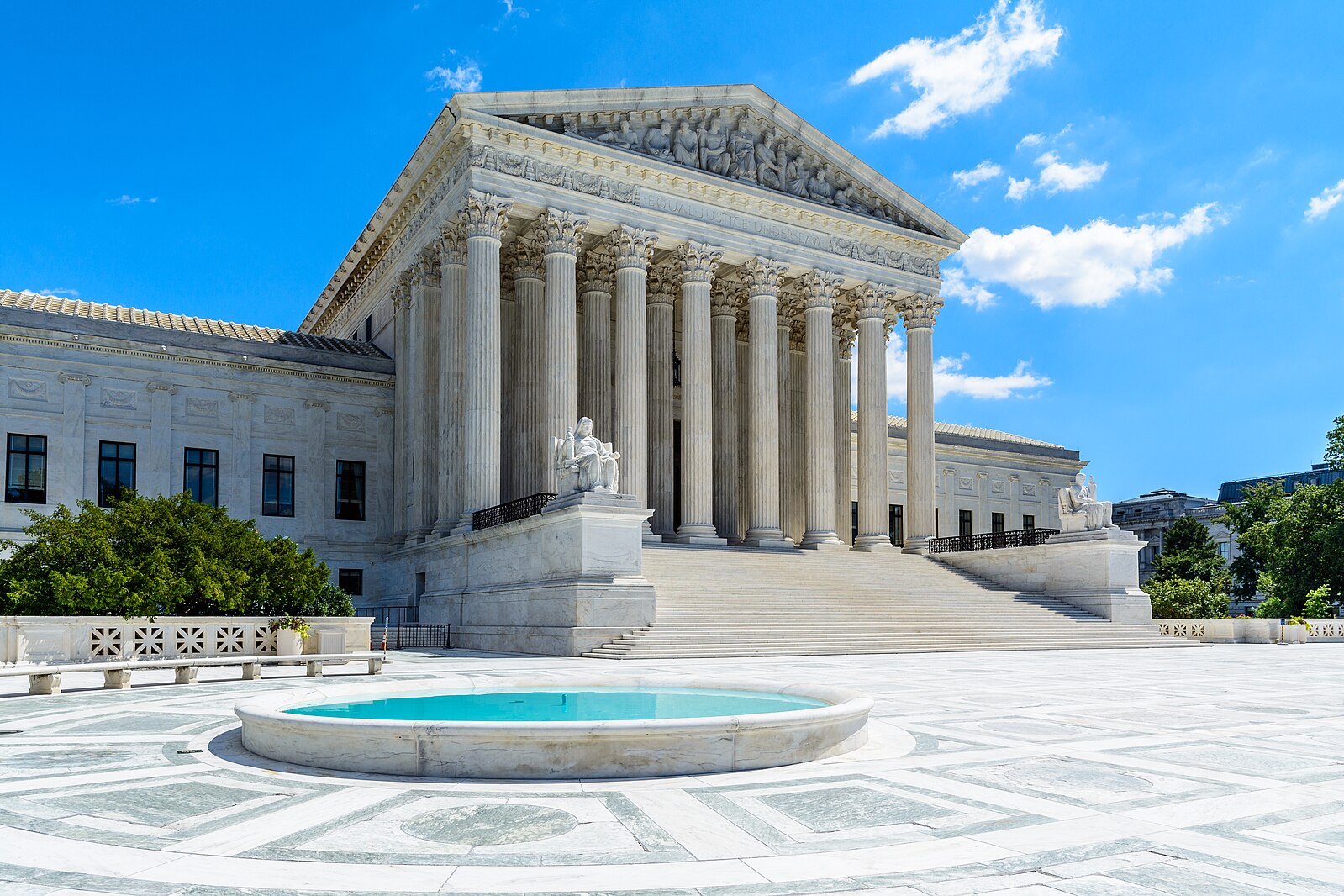Britain Goes to the Polls in a High-Stakes Election
Next week’s vote will be a decisive moment in the polarizing Brexit debate, with the outcome indicating support for a divorce deal with the European Union, a second referendum, or continued stalemate.

Published by The Lawfare Institute
in Cooperation With

On Dec. 12, voters in the United Kingdom will head to the polls in a high-stakes election. It will be a decisive moment in the polarizing Brexit debate, with the outcome indicating support for a divorce deal with the European Union, a second referendum, or continued stalemate.
At the same time, voters must also consider parties’ domestic policy proposals and prime minister candidates. For many, these considerations do not readily align with an obvious choice at the ballot box. Although the incumbent Conservative Party is currently ahead in the polls, swing voters and tactical alliances make the outcome impossible to predict.
How We got Here
Next week’s vote will be the U.K.’s third general election in five years. The Conservative Party has been in power since May 2010, when its electoral success ended 13 years of Labour Party rule. Short of a majority, David Cameron joined forces with the Liberal Democrats to lead the U.K.’s first post-war coalition government. In the May 2015 elections, the Conservatives won a majority of seats and Cameron formed his own government. After failing to secure support for remaining in the European Union during the June 2016 Brexit referendum, Cameron resigned and was replaced by Theresa May. She held snap elections in June 2017 in an effort to bolster her parliamentary majority during divorce negotiations with the EU. Despite polls showing a 21-point lead, May suffered a disastrous result and lost her majority. In order to govern, she entered a confidence and supply arrangement with Northern Ireland’s hardline Democratic Unionist Party (DUP).
In the intervening two years, Parliament has been hopelessly gridlocked over Brexit. After May failed three times to secure backing for her divorce deal, she resigned and was replaced by Boris Johnson in July 2019. He succeeded in renegotiating the deal, replacing the unpopular backstop for Northern Ireland with alternative measures to avoid customs infrastructure on the Irish border. Parliament gave preliminary support to the legislation required to implement his deal, but balked at his desired three-day timetable to scrutinize the details and conclude its ratification. In order to ensure the U.K. did not leave the EU without a deal, Parliament passed a bill that forced Johnson to request a three-month extension to the October 31 deadline. He was further hamstrung by the loss of a governing majority, following a number of defections and his expulsion of 21 members of Parliament (MPs) from the party for voting against the government in support of the extension.
Johnson wanted snap elections, but he failed three times to secure support from two-thirds of Parliament as required by the Fixed Term Parliament Act. Once the EU extended the Brexit deadline to January 31, 2020, members backed elections (via a one-line bill amending the Act) in a 438-20 vote. This will be the first December general election since 1923. Some members are grumpy about campaigning on cold and dark nights, while others worry about their security when confronting an angry electorate. The weather could depress turnout on election day while increasing postal ballots cast in advance.[more-blog-posts]
Jockeying Over Brexit
In many ways, this election is about Brexit. For the Conservative Party, it is the best chance to “get Brexit done,” in Johnson’s words, by securing a parliamentary majority for a deal and working to leave the EU by the January 31 deadline. Johnson is using a “people versus Parliament” narrative to explain his party’s failure to deliver Brexit thus far. If he wins, he has promised a vote on his Brexit deal before Christmas.
Johnson is vulnerable on his right flank, where Nigel Farage’s Brexit Party is appealing to frustrated voters who want Brexit delivered immediately. Although Farage wants Johnson to tear up his Brexit deal, he would likely accept promises of greater divergence from EU regulations in the future relationship. He succeeded in pressing Johnson to rule out extending the transition period — currently scheduled to end on December 31, 2020 — to negotiate such arrangements. Yet if Johnson shifts too far, he could alienate Tory voters who prefer a softer Brexit or remaining in the EU. He was greatly helped by Farage’s decision not to field candidates against incumbent Conservatives, which has caused the Brexit Party’s support to plummet.
For pro-Remain parties, this election is seen is the last chance to stop Brexit.
For pro-Remain parties, this election is seen is the last chance to stop Brexit. The main opposition Labour Party has walked a careful — and often confusing — line. Party leader Jeremy Corbyn is a life-long euroskeptic who supports a softer Brexit, including continued membership in the EU’s customs union. If elected, he has promised to renegotiate the Brexit deal and then hold a second referendum to let voters choose between his deal and staying in the EU. He said the party would decide its stance on this question before the referendum; although this makes some political sense given divisions in the party, it will be awkward to execute in government. Labour is essentially a pro-Remain party, but its membership opted at the September party conference to back Corbyn’s phased approach rather than assert support for remaining in the EU.
The Liberal Democrat Party, which is targeting voters in Remain districts, sought to present a clear alternative to Labour by promising to revoke Britain’s request to leave the EU — without a second referendum. Yet this approach failed to gain traction with voters. Despite leader Jo Swinson’s claim that she could win enough seats to form a government, the party has struggled in the polls. As a result, the Liberal Democrats have changed tack by calling on voters to deny Johnson a majority and pledging to back a second referendum in a hung Parliament (although Swinson has ruled out supporting Corbyn as prime minister). The party is now being squeezed in the polls by Labour.
The Scottish National Party (SNP) is a compelling option for Remain voters in Scotland, where 63% of the electorate wanted to stay in the EU. However, some voters are wary of the party’s desire to hold a second Scottish independence referendum (following a failed attempt in 2014). Party leader Nicola Sturgeon said the price for backing a Corbyn-led government would include support for a referendum as well as the removal of Britain’s nuclear weapons (Trident) from their Scottish base. The party is facing internal challenges, as its former leader will face trial in the new year on sexual assault charges.
What Else is at Stake
Despite the centrality of Brexit, there is more at stake in these elections. Voters will also be choosing a government to manage the U.K.’s domestic policy for the next five years. The two main parties are headed by unpopular leaders with different visions for the country’s future.[related-books]
The Conservative Party, whose support in the 2017 election tanked after the publication of its campaign manifesto, has focused on a limited set of bread-and-butter issues. The party’s central argument is that Brexit must be completed in order to address public services. Having abandoned its previous focus on austerity, the Tories are promising increased funding for pensions, police, health, and education — albeit with continued emphasis on a small state, free markets, and limited regulation.
Labour has doubled down on the left-wing agenda debuted in the 2017 election manifesto. As a self-described socialist, Corbyn is promoting a radical-left economic policy that includes abolishing private schools and renationalizing industries. Although his focus on public services captured the public imagination two years ago and contributed to increased electoral support, the party has not enjoyed the same bounce this time. His approach leads some voters — especially the wealthy — to see him as a greater threat to the country’s future than Brexit. Corbyn has also been described as the “least popular leader of the U.K. opposition in living memory,” stemming from his ambivalence on Brexit, economic radicalism, and perceived tolerance of anti-Semitism in the party. The party climbed in the polls in late November, but some voters remain conflicted between policy and personality.
Tactical Voting
A week before the election, polls show the Conservatives averaging an 11-point lead over Labour. However, polls have been misleading in recent elections: The Conservatives did better than predicted in 2015 and much worse in 2017. The first-past-the-post electoral system makes it hard to gauge how national support for a party will translate into votes for candidates in single-member constituencies. Voter volatility makes the results even more unpredictable. According to the British Election Study, 49% of the country voted for different parties in the last three elections.
The polarizing nature of Brexit has led voters to identify primarily with Leave/Remain positions rather than traditional left/right divisions. As a result, some will vote tactically to support the candidate best placed to represent their Brexit views. Parties are helping facilitate this approach by building alliances. For example, the Brexit Party has agreed to focus primarily on Labour seats rather than split the Leave vote by targeting Tory-held ones. On the opposition side, the Liberal Democrats, Green Party, and Wales' Plaid Cymru formed a Remain Alliance by carving up seats in non-aggression pacts to attract Remain voters. This was a challenging process: The Liberal Democrats faced resistance from the Green Party in England and disagreed with the SNP on Scottish independence, while Labour refused to stand down in any seats.
There are also tactical decisions in Northern Ireland’s polarized constituencies. The moderate nationalist Social Democratic and Labour Party is not contesting a seat in North Belfast (as well as two other districts) for the first time in its history to secure the seat for a pro-Remain candidate. The moderate Ulster Unionist Party will not field a candidate in the constituency of Nigel Dodds, the DUP’s leader in Westminster, to avoid splitting the unionist vote as hardline nationalist Sinn Féin tries to unseat him. (Dodds is not the only leader facing a serious opponent, as Johnson and Swinson also face tight races to retain their seats from respective Labour and SNP challenges.)
A Fork in the Road
Once the ballots are counted, the country will face one of two outcomes. The most likely scenario is a Conservative government, though the bar for victory is high. Johnson is seeking a sizable majority to ease the passage of his legislative priorities, especially Brexit. If he falls short, he will likely lose office given the lack of viable coalition partners: Opposition parties support remaining in the EU, and the DUP, which propped up May’s government, disagrees with the treatment of Northern Ireland in his Brexit deal. If elected, Johnson would seek to quickly ratify his Brexit deal, begin negotiating free trade agreements with the EU and U.S., and implement high spending domestic policies.
Second, there could be a minority Labour government with issue-by-issue support from other opposition parties. (“The chances of the Labour Party winning a majority,” says polling expert John Curtice, “are frankly as close to zero as one can safely say it to be, given that they look to be incapable of regaining anything in Scotland.”) A formal coalition would be difficult, given Corbyn’s unpopularity (as both the Liberal Democrats and DUP refuse to support him) and the SNP’s demand for an independence referendum (which Corbyn has opposed before the May 2021 Scottish Parliament elections). But parties could agree to back him on certain matters, including a second Brexit referendum; this would necessitate a further extension from the EU and take months to prepare. If no party or combination of parties can form a workable government, new elections would be required.
After years of gridlock, British voters are hoping for clarity by the holidays. With competing visions of Britain’s domestic and European future at stake, voters face a difficult decision in one of the country’s most highly contested and unpredictable elections in recent memory. Unpopular personalities, regional politics, tactical voting, and winter weather will make the result a nail-biter.


.jpg?sfvrsn=407c2736_6)


